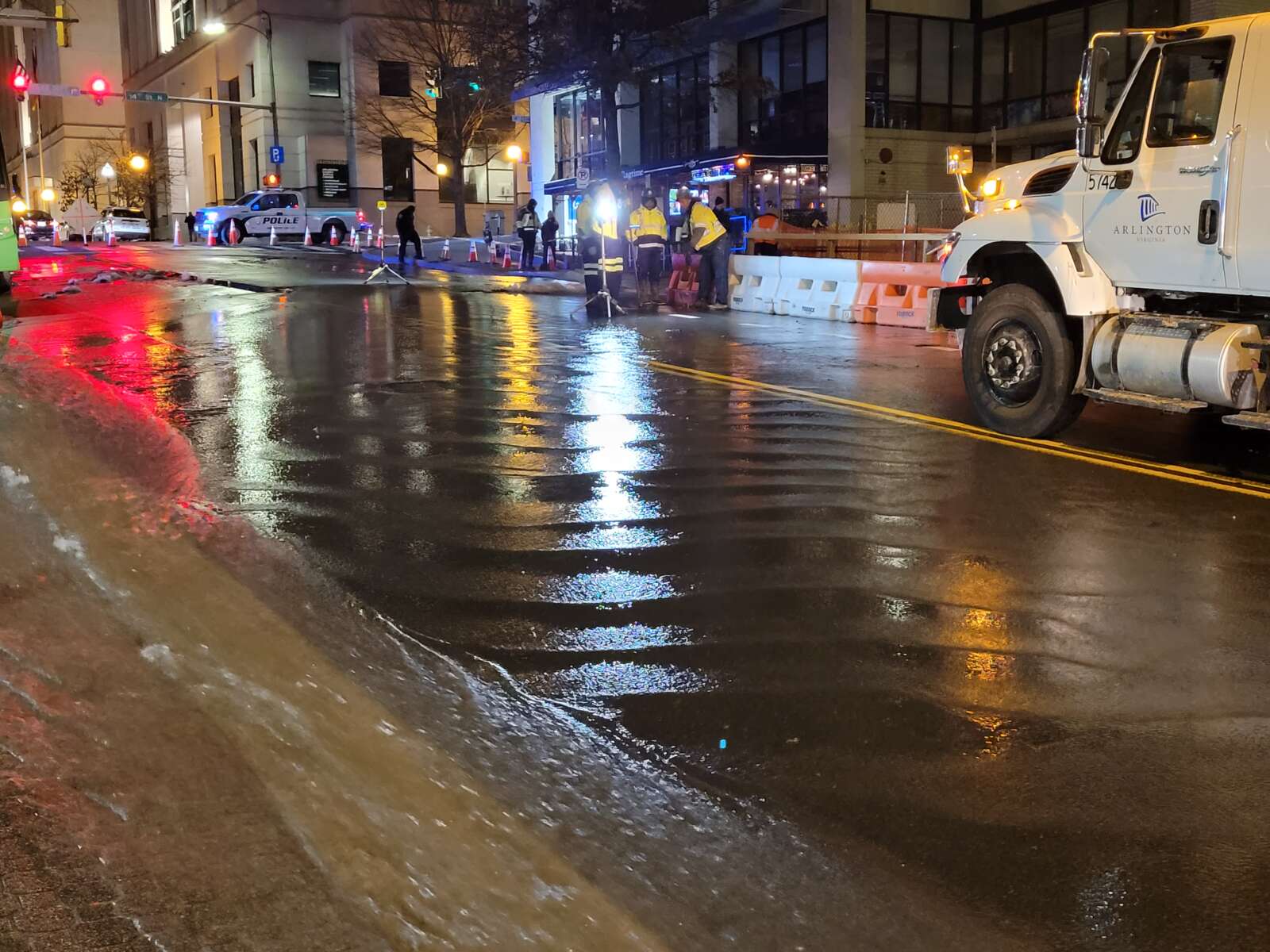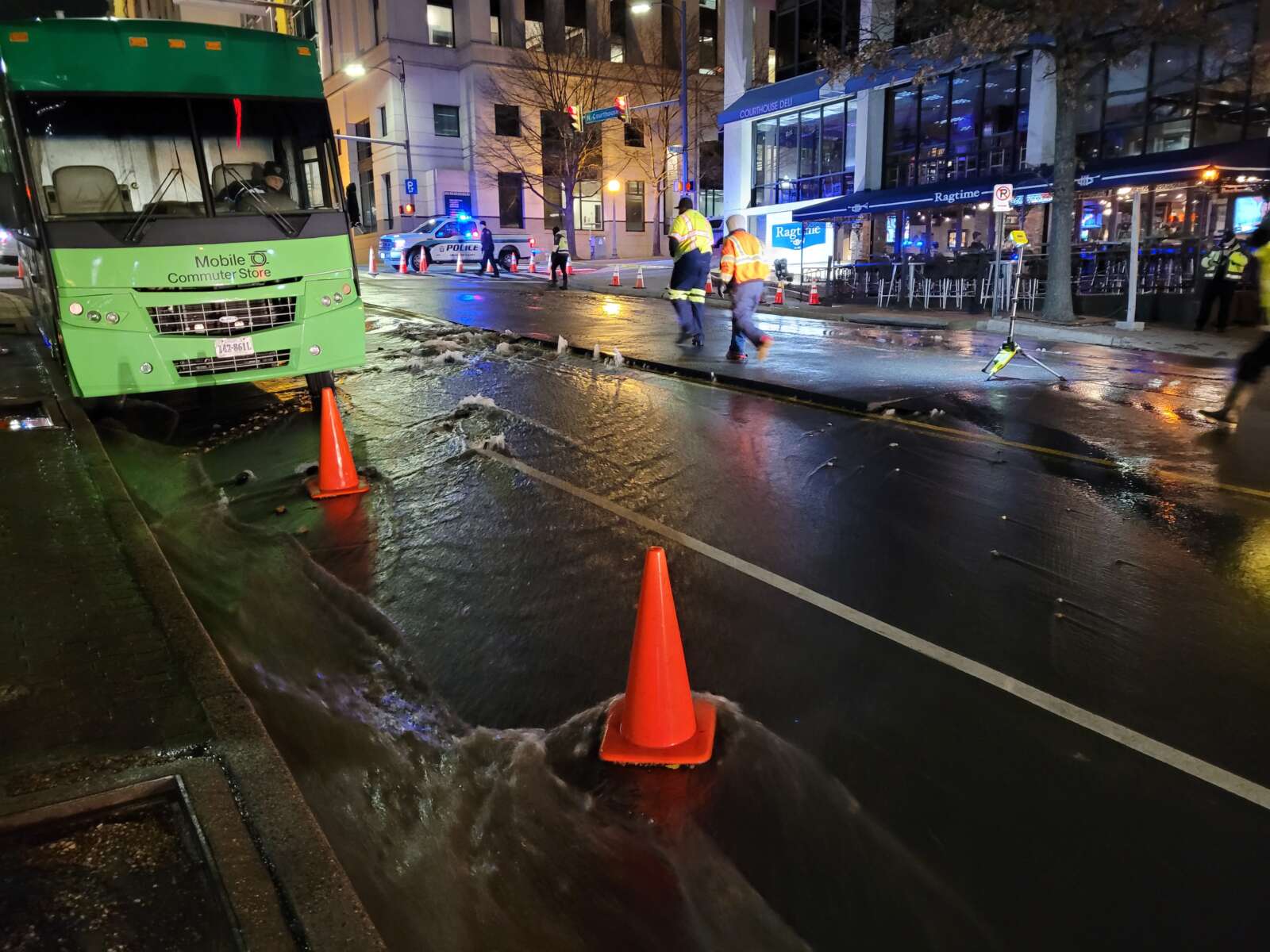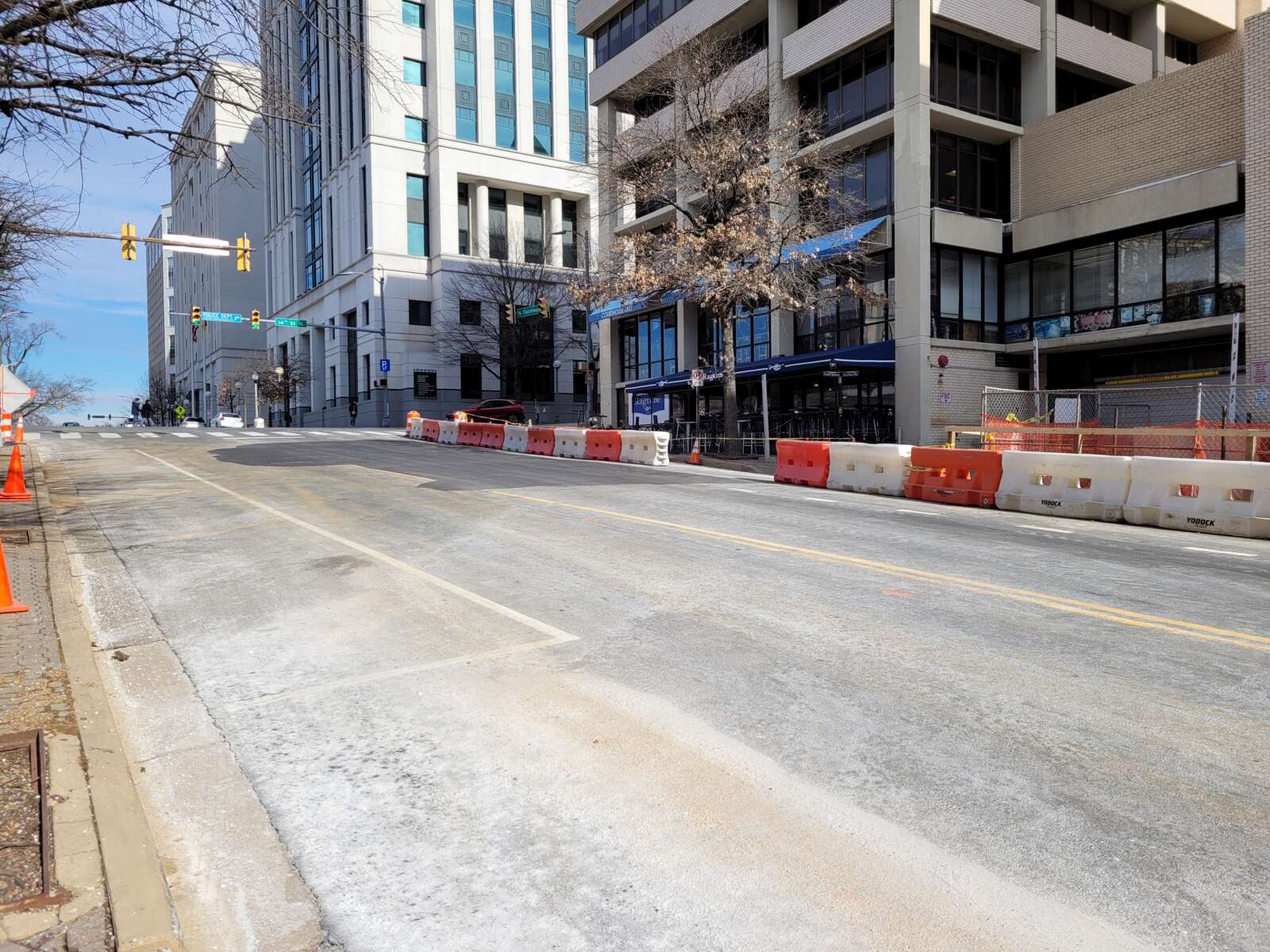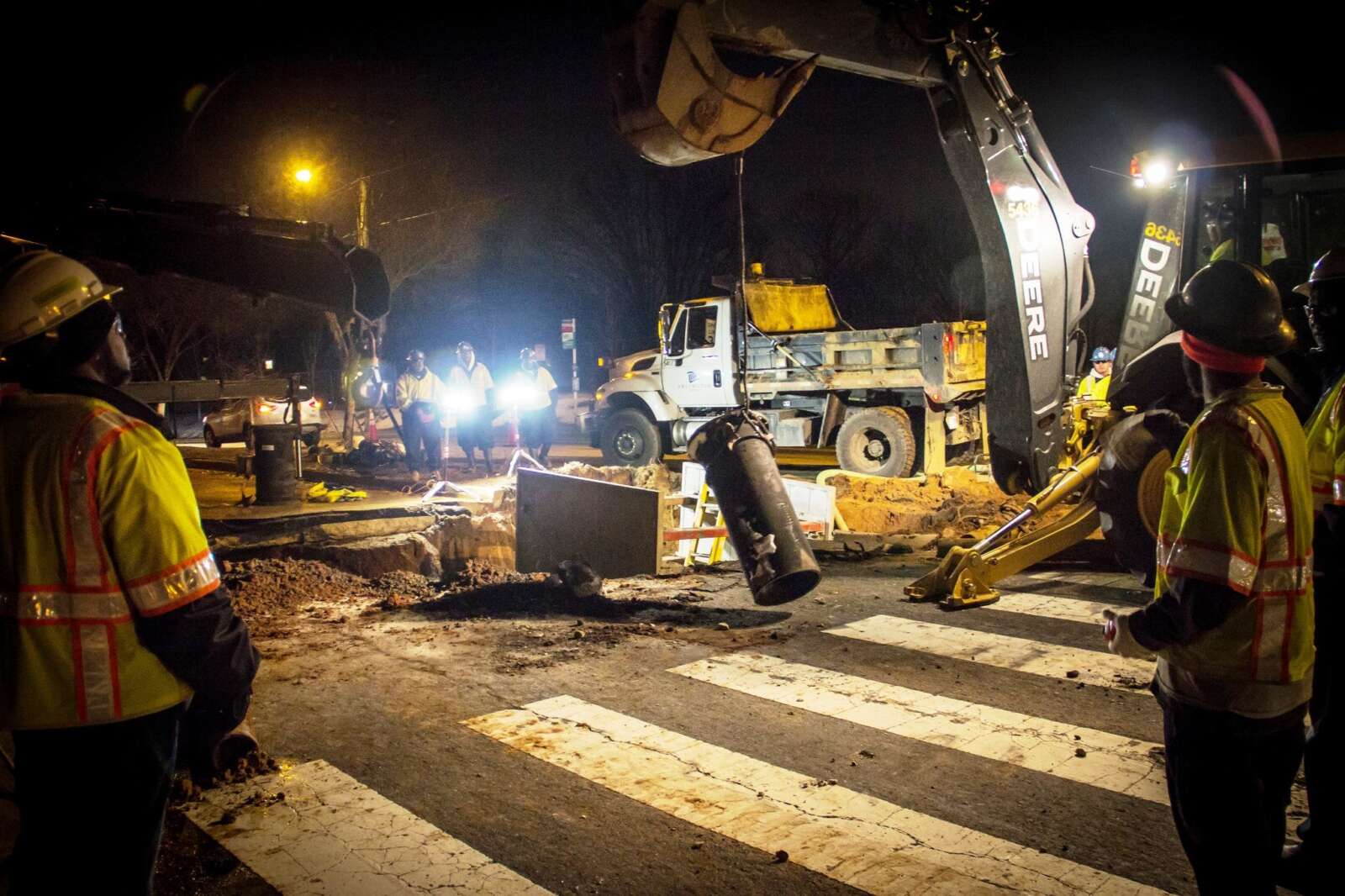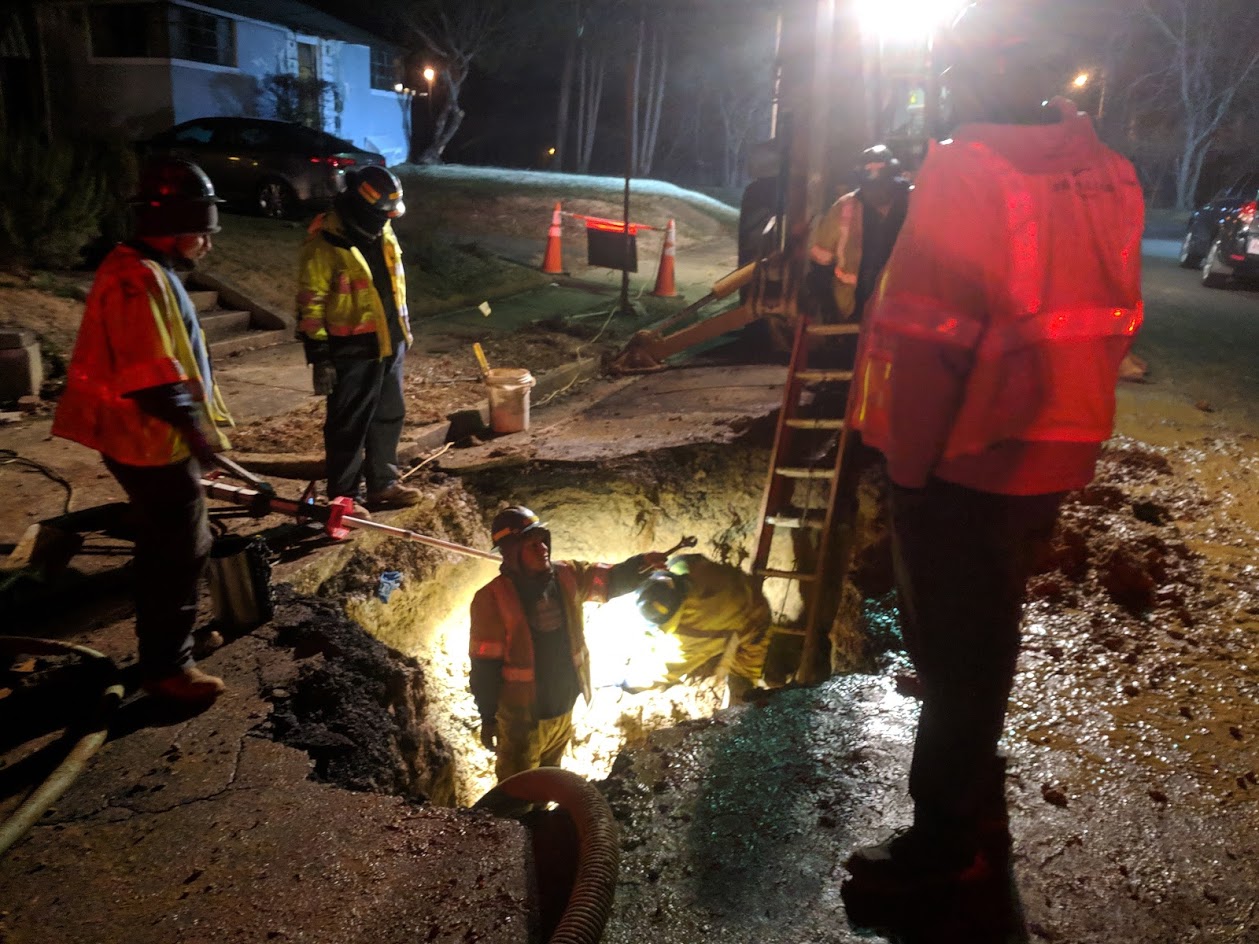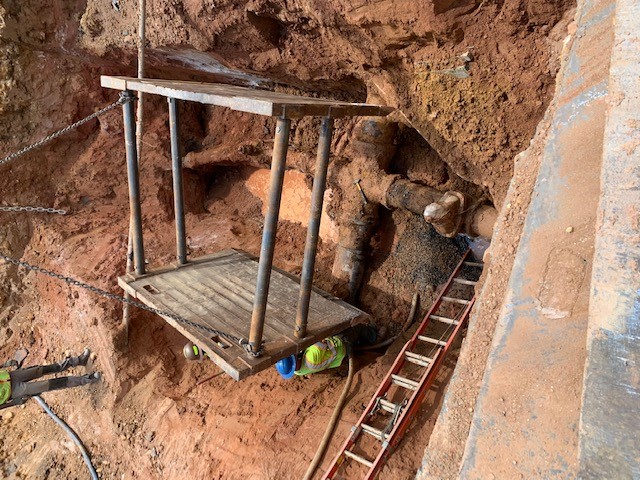This winter’s storms and freezing temperatures have caused a spike in water main breaks.
Crews with the Department of Environmental Services’ Water, Sewer and Streets Bureau repaired 47 water mains in January, as of 6 p.m. Monday, with two repairs in progress and six planned, said DES spokesman Peter Golkin.
By comparison, January 2021 saw 30 main breaks, up from 19 in January 2020 and eight in January 2019, he noted.
Since Golkin provided those stats last night, two additional water main breaks have been publicly reported, in East Falls Church and Green Valley.
Golkin, who runs the DES Twitter feed, attributed the “above-average number of water main breaks” to “an unusually intense winter” in a recent tweet.
“Recent winters have been fairly mild,” Golkin tells ARLnow. “But we are seeing an upward trend for breaks over the past four years.”
Winter weather exacerbates the other reasons these mains break: age and materials used. Rehabilitating and replacing old water mains has been and continues to be a decades-long county effort.
Arlington has about 500 miles of pipes that bring water to homes and businesses. Of those, about 60% are cast iron pipes more than 50 years old — and thus prone to leaking.
“So age is a factor in the sense of which type of iron we’re dealing with,” he said. “Arlington’s cast iron pipes were not lined with a protective coating to prevent corrosion. While for the most part they’re in good condition, over time the inner and outer diameter thins. Then, factor in winter and the differences in temperature between pipe, water and surrounding soil and you get stresses on the pipes.”
When mains break, crews stop the flow of water, which can cause temporary service disruptions to some properties. Repairs can take six to eight hours from when leaks are reported but could take longer if they’re on a major water line and involve significant damage.
And right now, responding to leaks is a grueling job, Golkin says.
“Crew safety and health is always the preeminent concern in responding, especially with bitter temperatures, darkness and Covid protocols,” he said. “But our professionals know what’s required and can usually complete a job in 6-8 hours despite all sorts of conditions. And they have to be prepared around the clock, seven days a week.”
Saluting the Water, Sewer, Streets Bureau professionals who, in an unusually intense winter, make massive water main breaks look like they never happened. Literally the difference between night and day in less than 24 hours. #TheOtherFirstResponders https://t.co/8YbKyxDQSg pic.twitter.com/QWElkH1g5b
— Arlington Department of Environmental Services (@ArlingtonDES) January 23, 2022
Per location data from the county’s online map of leaks and repairs, crews had to respond to the same address twice in a half-dozen recent cases. Golkin says that’s typical.
“Repairing a water main naturally generates stress on the line, which can lead to nearby follow-up breaks,” Golkin said. “So if a certain neighborhood has had a repair, then there’s an increased chance that another problem might soon develop on the same block.”
When multiple leaks happen concurrently, the bureau prioritizes repairs based on the number of residents impacted, he said.
“DES prioritizes by the impact of each break, so if there is a repair needed in a residential neighborhood, that would get first attention compared to a break next to office buildings closed for the night or a weekend,” Golkin said. “Sometimes a break doesn’t mean a loss of water service, possibly due to redundancy in the water main network. That can give the bureau flexibility in scheduling a repair.”
The bureau also calls in contractors to help as needed.
While DES is fixing leaky mains, it’s also replacing some and rehabilitating others as part of a decades-old Capital Improvement Program.
For the current CIP, which started in July 2021 and will end in June 2024, Arlington budgeted $5 million a year for water main replacements and $1.5 million a year for rehabilitation.
By 2040, Arlington aims to replace all of its 4-inch mains and smaller “temporary” lines that were installed before the 1940s. Golkin says the county replaces more than 1% of pipes in the system annually.
For example, this fall the county will spend $1.6 million to build a new water main along Key Blvd from N. Jackson Street to N. Danville Street in Lyon Village. It will replace an aging water main built in 1927 that the county said was experiencing an “excessive number of breaks.”
By 2040, Arlington aims to clean and line another 250 miles of water mains, a cheaper and less disruptive process than replacement. Golkin says the rehabilitation program addresses 1-2% of the system annually.
Meantime, with lows in the 20s and 30s, residents can take a number of steps to prevent winter-induced stress on their own pipes, as seen below.
Think of the pipes. https://t.co/YKLFieQnct pic.twitter.com/hmVdbYmK9V
— Arlington Department of Environmental Services (@ArlingtonDES) January 26, 2022
Golkin encouraged those who suspect a water main break to call Arlington’s 24-hour Water and Sewer Emergency Control Center at (703) 228-6555. They can also check the online map or the DES Twitter feed to see the latest planned repairs.


